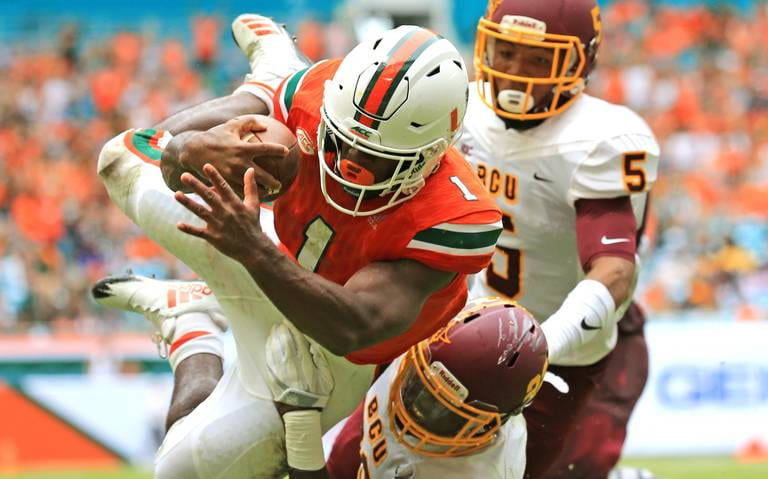De’ Ronzy Lawrence
Contributing Writer
A junior college can serve as either a stepping stone or a second chance for many college football athletes. They give an opportunity for athletes that did not sign with a major university a chance to further hone their skills. Or the athletes that got removed from a major university program for whatever reason, a second chance at school and football.
Out of 1,462 junior colleges in the United States, there are only about 127 that have football programs. Out of the 127 football programs only one is in Florida. This comes as a surprise to many people seeing as how Florida is ranked number 2 by the Bleacher Report for the most Elite college football talent produced.
According to SBnation, Florida has also accounted for 13.6 percent of blue chip players recruited from 2013-2017. Both rankings fall only behind the state of Texas, which has six Junior College football programs.
In a state that produces great football talent like Florida, more junior college football programs need be created. Florida college athletes use football as an avenue to help shape a successful future. Most of these athletes do not come from wealthy backgrounds that can help them pay their way into a major university. Some of these athletes are not geniuses with high grade point averages and stellar SAT scores to help them get accepted.
Picture growing up in a neighborhood where money is so scarce, that knowing when your next meal is, will become a mystery. Imagine growing up in a neighborhood where drugs, alcohol, and violence is more of common site then neighbors greeting each other each morning. Envision the sounds of thunderous gun shots and ear-piercing police sirens as your alarm to get up for every other morning.
The truth is a large amount of college athletes come from an environment where they are surrounded by poverty. For example, NFL players Michael Oher and Knowshon Moreno both spent the majority of their childhood homeless before football changed their lives. Playing football not only provided them with a scholarship, but also a place to live, eat on the regular, a chance at an education, and to be in an environment free from their childhood misfortune.
Attending a junior college out of state only aids to the struggle. Most families in similar situations are not financially stable enough to help support states away. Furthermore, most junior colleges do not have dorms for their students. Finding a place to live along with other life essentials will be extremely tough for a college athlete to maintain. Having junior college programs closer to home can be far more affordable for athletes and their families in similar situations.
So why is Florida lacking in junior college football? Football is by far the most expensive sport in the United States. It is a huge expense for any university, even more so for a junior college. According to Adelphi University, in the 2011-2012 academic year, the University of Georgia spent $600,000 on recruiting athletes for their football program.
In 2013, the University of North Carolina spent $75,000 for three new sets of uniforms for their football program. Additionally, UNC spends $30,000-$40,000 on football uniforms in a typical year with no uniform redesigns.
“Most college level programs have at least 85 kids. That is 85 sets of equipment, hiring coaches for 85 kids, academic support for 85 kids, insurance for 85 kids and I could keep going. Also, you need facilities to support those kids, living, food, tuition, and of course a stadium to play in,” said former Miami Hurricane football player and current offensive line coach for Coral Gables High School, Alex Pou.
Junior college athletics does not generate that much revenue, which makes a program difficult to sustain. With the high cost to sustain other athletic programs, some junior colleges have considered cutting athletics to maintain other educational programs. In 2010, then Mississippi Gov, Hayley Barbour suggested that the state’s 15 community colleges either significantly downsize or completely eliminate athletic programs in order to save money, according to David Moltz of Inside Higher Ed.
In essence, having Junior colleges in Florida gives hometown kids another option for success. It creates more opportunities for kids to escape a life that no one would ever want to be a part of.
Currently, Florida is trying to add more junior college football programs around the state. As of 2015, ASA Community college in Hialeah Fl, is the first junior college in south Florida to establish a football program. With the early success of the ASA football program, this should entice other local community colleges like Broward and Miami-Dade to establish programs of their own.
Photo credit: miamiherald.com
